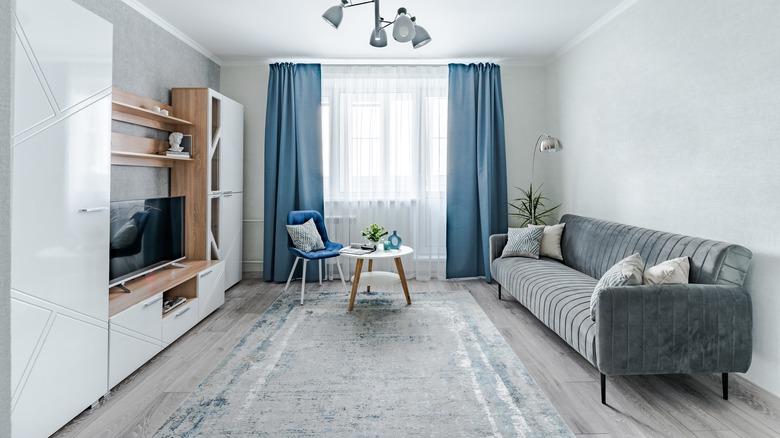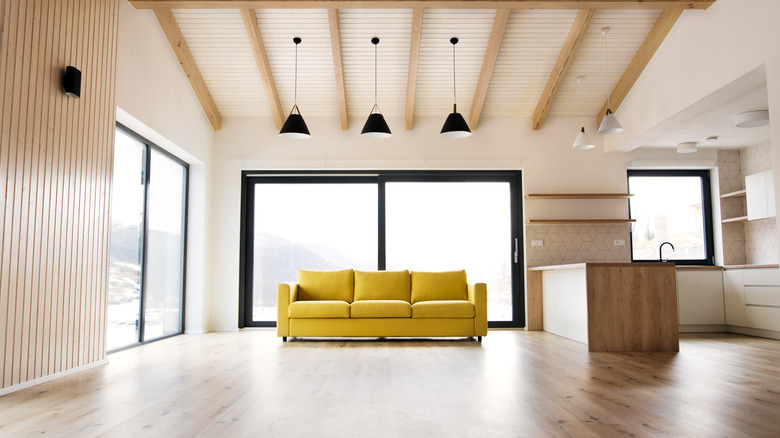The Ceiling Design Idea That Can Make Your Small Rooms Look Way Bigger
When it comes to decorating or furnishing small spaces, we have a natural tendency to subtract. There are tons of tips and ideas to make small living spaces seem bigger, which advocate for light colors, thin furniture, and minimalist decor. But here's a plot twist — adding a little something to your ceilings can visually open up a small living space. And that something would be a wooden beam. Contrary to popular belief, wooden ceiling beams aren't just reserved for rustic country houses or sprawling industrial-chic lofts with 10-foot ceilings. Adding wooden beams to standard height rooms can visually enhance its proportions by drawing the viewer's eye upward, giving the impression of taller walls and loftier ceiling heights.
Wooden beams are usually associated with necessity, functioning as structural supports for floors and ceilings. In the past, leaving structural beams exposed instead of covering them up saved time and money. Today, architects, interior decorators, and homeowners are drawn to a wooden beam's decorative aspect, rustic aesthetic, and its ability to singlehandedly elevate a room. Whether you're going for real or faux wood, adding this architectural element to a small room will compensate for limited floor space in the most charming way.
Factor in size, spacing, and placement
Some key factors to consider when adding wooden beams to a small space are a beam's size, count, direction, spacing, and placement. To get the desired effect of spaciousness and height, opt for fewer beams of larger dimensions, rather than crowding your ceiling with numerous small ones, and consider placing them further apart. While beams are normally arranged at intervals ranging from 2 to 8 feet apart, with most people favoring 4 feet, there is no set rule. Instead, try to get a feel for the volume of your room and go for the maximum width between beams that you are comfortable with.
Finally, beam placement can make or break a space. Instead of putting the first and last wooden beams against the wall — this creates a constricting effect by tracing your ceiling's actual dimensions — move them further away from the edges to maximize the impression of space.

